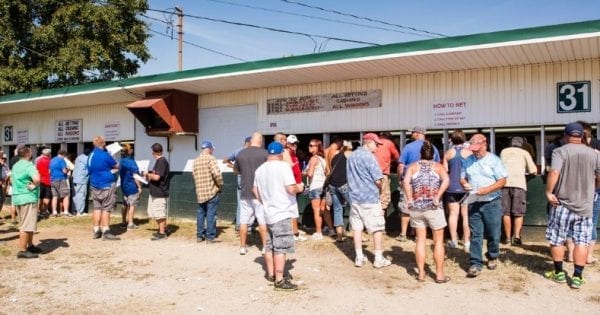Black Friday won’t work for customers of harness racing
Instead of trying to wow people with a one-day takeout sale and special card, let’s focus more energy on keeping existing customers that bet year-round.
by Dean Towers
Today is the craziest shopping day of the year – Black Friday. It’s a day that benefits consumers (certainly the demographic who is lighter in the wallet than some), and the stores who sell to them. It’s an American Thanksgiving weekend tradition, and probably will be forever.
I’ve often heard that harness racing should have a “Black Friday” for bettors; a big takeout sale, a great race card, seeded pools, the whole shebang. It’d energize customers, and give the sport some good PR. My answer to that, every year, is the same – harness racing and flash sales have absolutely nothing in common. It’d do nothing for the sport because this sport — from a betting perspective — depends on one thing more than most, and that’s regular, every day players.
Every day players are the customers who show up (or bet) several times a week, all year long. They play the races 200 or more days a year, rain or shine; they’re the folks that Moira Fanning calls “her people” on her Twitter feed. They are the sport’s lifeblood, people who provide “lifetime value”; something that racing depends on for its revenues and relevance.
Lifetime value (in its simplest definition) is how much money a customer spends with you per year, multiplied by the number of years he or she is a customer. It is dependent in large part on a retention rate, i.e. how many bettors out of one hundred stay with you each year. It’s that part of the equation that’s vitally important, and in my view, it can’t be stressed enough.
If a track has a customer betting $250 a visit over 200 visits a year, and the margin (e.g. the portion of the takeout rate that goes to your track) is 10 per cent, he or she brings in $5,000 revenue per year. If this customer keeps coming back forever, you get your $5,000 every year, ad infinitum, but that doesn’t happen. Some leave, some go broke, and some come much less often. That makes up a retention rate.
If harness racing has a retention rate of 85 per cent (85 out of 100 customers keep coming back each year), the average person is a customer for 6.67 years. The cumulative net present value of these customers after year five is $18,543 – a sizeable profit.
Now, what happens if the sport does a poor job keeping these every day customers – they switch to poker, thoroughbred racing, or simply stop betting — and the retention rate drops to 70 per cent. Then the average life span of customers falls back to 3.33 years, and that $18,543 of profit after year five drops to $13,866. That’s huge.
Much of the focus in this sport, and in thoroughbred racing, is about marketing to new people and trying to convert them into long-term customers. This is extremely difficult, because the learning curve is steep, and it’s a time-consuming game. It may cost tens of thousands of dollars to find a customer who will bet with you for six years, and bring in $18,000 after year five. If it’s costing you more than $18,000 – which I firmly believe it is — it’s a losing proposition.
Now, I am not saying never going after new customers is smart, don’t get me wrong. But, I believe an easier and more cost-effective strategy is to pay huge attention to existing customers. Work hard to keep them customers, and while they are, ensure they are given the tools and pricing to bet more and more money. Some of you might be saying this has always been a goal, and the sport works hard at exactly that, but – with respect — I don’t believe it for a second.
I have an example that happened over a decade ago now. A player was betting a pretty decent amount at a venue via a players’ card mostly on harness racing – more than $250,000 per year. Then, one day, cold turkey, he withdrew his balance and moved his play. He, like any customer, expected a call, perhaps an email asking where his play went. Maybe they’d even offer a deal to get him back.
There were crickets. Not one person contacted him. To this day no one has.
In what business would someone have all your information, know your play, and see that upwards of $40,000 of revenue per year is suddenly gone, and not even call to find out why?
I’m sure customers of harness racing reading this have similar stories.
Harness racing has a long way to go when it comes to keeping existing customers betting, happy, and enticing them to bet more. Identifying them, modeling their play – using both big and small data — and keeping in contact with them is paramount. Follow the casinos for a roadmap on customer appreciation, dynamically price, and use internal numbers that are unique to horse racing for the rest.
The sports’ existing customer base is inordinately more important than any new “Black Friday” shopper that walks in the door. Harness racing would be wise to be cognizant of that.

















